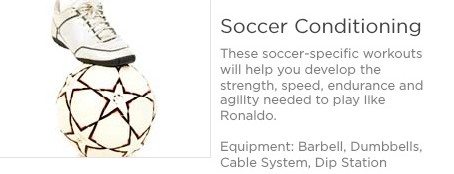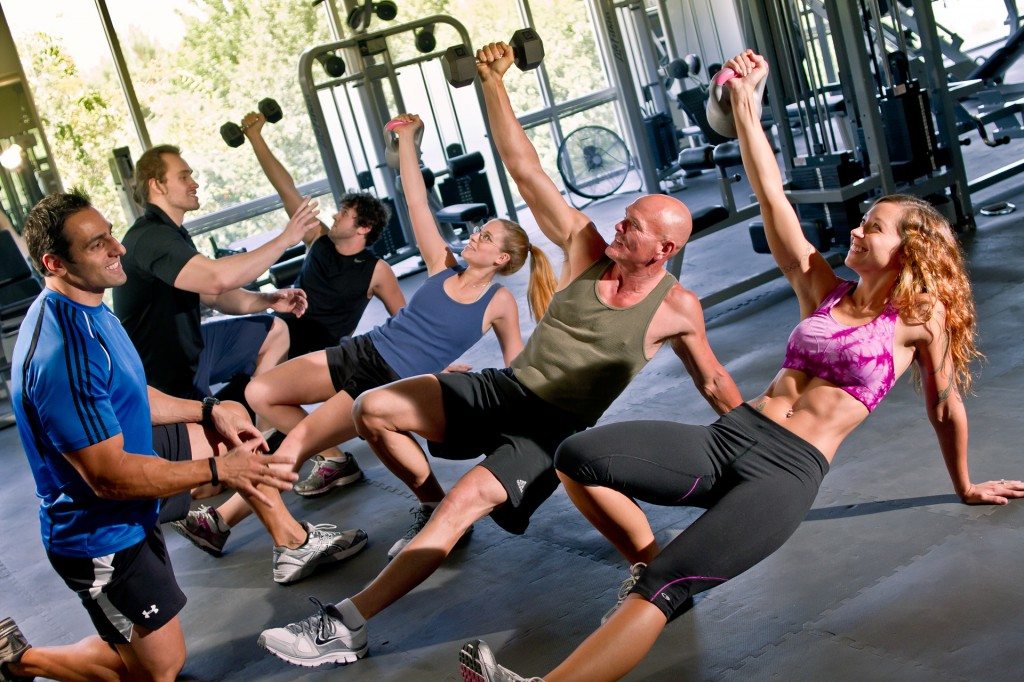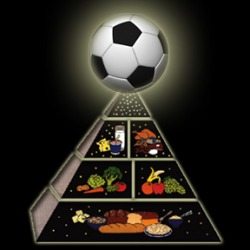

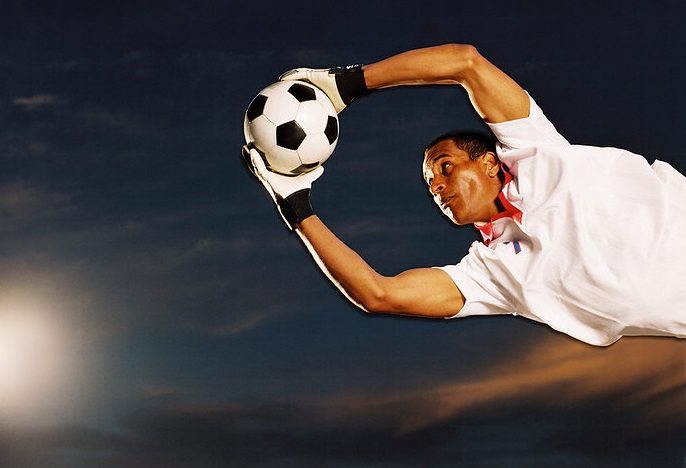
World Cup 2014 Soccer Series Part 2: Physical Training
This is our second installment of our World Cup Series. You may recall World Cup Series Part 1 dealt with History. Here we like to focus on training your body.
How to Train Like A Soccer Player
Soccer players are always moving up and down the field, so they need to be fast on their feet, able to endure long periods of time without any rest, and physically strong. Instead of focusing purely on size, they need to focus on areas such as full body strength, improving balance and overall endurance conditioning. For soccer players, they need to focus on exercises which will help them increase their speed, power and build up their core muscles. Our program is designed to cover every facet necessary to help you become a world class World Cup champion.
Getting Warmed Up
Before you start truly working out, it is important that you warm up. Warming up the body gets your muscles loose and relaxed while making sure that your blood is really pumping. Warming up the body is like stretching before a long run … you just need to do it; otherwise, you could really hurt yourself.
Our dynamic warm-up routine is designed to maximize your blood flow, increase your heart rate, increase your range of motion and prepare the body for a strenuous workout.
Plyometrics
For soccer players, having explosive power and speed is an absolute must have. One of the best ways to increase your EXPLOSIVE power and speed is through Plyometrics. Plyometric exercises do not rely on heavy, bulky weights; rather, they are built off of bodyweight exercises and possible some static equipment. Plyometric exercises focus on quick, explosive movements such as lunging, jumping and stopping. These exercises can be dangerous if performed improperly, which is why it is important to have an experienced personal trainer working one-on-one with you. Our Plyometric program will help you develop plenty of EXPLOSIVE power and speed quickly, and safely, without wasting time in other less effective workout sets.
Strength Training
There are four types of strength training programs for soccer players; they are:
- Off-Season Training: Focuses on building up your functional strength.
- Off-Season / Pre-Season Training: Focuses on maximizing your functional strength.
- Strength Training and Endurance: Focuses on building up your muscular endurance.
- In-Season Maintenance: Focuses on keeping your body in full working order.
Our soccer conditioning program will help you develop speed, strength, endurance and agility; all of these factors play a big part in becoming a World Cup champion. Schedule an appointment with one of our trainers like Fadi Malouf, or Scott Black, and David Baldovin .
Stay tuned for part 3 as we look into Nutritional Training
World Class Athletes Celebrities Who Can Relate
With intense training, drive and determination, it is possible to be a fantastic soccer player like David Beckham, Ronaldo, Lionel Messi, Zinedine Zidane, Mamadona, Mia Hamm, Abby Wmbach, Marta, Christine Sinclair, Kristine Lilly. Along with those famous players, some celebrities have been known to kick around a ball, Gilles Marini, Anthony La Paglia, Chris Harrison, Maksim Cherkovski, Tony Hawk, Kerri Walsh, Misty May-Treanner, Britney Spears, and Brandon Roth.

World Cup 2014 Series Part 1 History Of Soccer
How The History of Strongmen Can Be Seen in Today’s BodyBuilding
When we think of strongmen today, we usually think of pro-athletes or that guy from Iceland who won a bunch of world strongest man competitions. But how strong are we today when compared with other generations?
In the 19th century, strongmen were the pro-athletes. They traveled the world, performing in circuses, lifting incredibly heavy things, bending iron bars, hammering nails into wood with their bare hands and wrestling bears, all while sporting classic handlebar mustaches. They did not have the latest in medicine or sport training science, equipment or facilities. They also didn’t have access to a plethora of legal and illegal performance enhancing supplements that are available today. They were just strong, ridiculously strong. So here’s our shortlist of the top five strongmen from the classic 19th century era.
Angus MacAskill
Also known as Black Angus or the Giant MacAskill, Angus was born in Scotland in 1825. He truly was a giant, reaching 7ft 9in and weighing in at over 500lbs. From early on, MacAskill worked as a fisherman where his impressive size and strength came in handy. His feats of strength included lifting ship anchors weighing 2,800lbs and carrying 350lb barrels under each arm. He eventually joined the P.T. Barnum circus and toured with General Tom Thumb. He is recognized by the Guinness Book of Records as the world’s tallest “natural” giant as well as having the largest chest of any non-obese man (80in).
Luis Uni
Born in France in 1862, Uni was better known as Apollon the Mighty. He made his name as a Greco-Roman wrestler and strongman performer in Bordeaux. Best known for the size of his forearms and wrists, and pinch-lifting 160lbs and lifting a pair of 366lb train-car wheels with an enormously thick axle overhead. In 1913 while attempting to hold back two cars with his bare hands he suffered a career ending arm injury.
Louis Cyr
Born in Canada in 1863, Louis worked in a lumber yard as a youth where he showed off his awesome strength, even at a young age. Imitating Milo of Croton, who carried everywhere he went a calf to full grown bull, Cyr attempted the same, but had to settle for a sack of grain when the calf kicked too much and bolted. He did, however, lift a fully grown horse in his first strongman contest. He also set a record for the one-handed bench press with a lift of 273lbs, breaking Eugen Sandows record by 2lbs. He also famously lifted a platform on his back containing 18 men weighing in at 4,337lbs. Cyr has been called the strongest man to have ever lived.
Eugen Sandow
Born Friedrich Muller in Prussia, in 1867, Sandow is often referred to as the father of modern-day bodybuilding. After fleeing his homeland to avoid military service, he traveled Europe performing as a circus strongman. He found fame in England where he was admired more for his bulging muscles than his feats of strength. In 1901, he held the Great Competition, recognized as the first ever recorded bodybuilding contest. Sandow also opened gymnasiums, designed strength training equipment and wrote books on exercise and diet. Some of his lifting feats included a 312lb one-arm dumbbell clean and a 1,500lb one-handed stone lift. He is forever a bronze statue simply called “The Sandow,” which is presented to the winner of Mr. Olympia each year.
Georg Hackenschmidt
Nicknamed the “Russian Lion,” Hackenschmidt was born in Russian in 1877. In school, he was a supreme athlete and excelled at many sports including wrestling and weightlifting. After school and a short stint as a blacksmith, he became a professional wrestler. He wrestled throughout Europe and became the first recognized heavyweight wrestling champion. He was known to often wrestle five different opponents in a night -of course defeating them all. In his career, it is estimated that he competed in about 3,000 professional wrestling matches and lost only lost twice. Known for the famous bear hug move. Along with wrestling, Hackenschmidt was also an accomplished weightlifter, recognized for polarizing the hack squat and bench press.
Though much has changed throughout the course of history for strongmen and bodybuilders much of what was done as far back as Ancient Greece is still doing in some form today. From carrying calves on their shoulders every day until, they were bulls, demonstrating progressive resistance builds strength. The “Grecian Ideal” the aesthetic standard that modern bodybuilders would aim to achieve. Even 11 century India using dumbbells carved out of stone to get bigger and stronger, by the 16th century weightlifting became India’s national past time. It was in 1904 that Benarr Macfadden began to organize and promote bodybuilding competitions for both men and women. Though it has been a predominately male sport women would evolve on the scene in the 1960’s with physique competitions would later see bodybuilding in 1970’s.
The roads are endless on to where you can go with weight training from a lifestyle transformation to look feel and live a healthy life, to compete in amateur, novice and professional stages. Keep up your dreams at any age and any level of platform. We can show you how every step of the way.
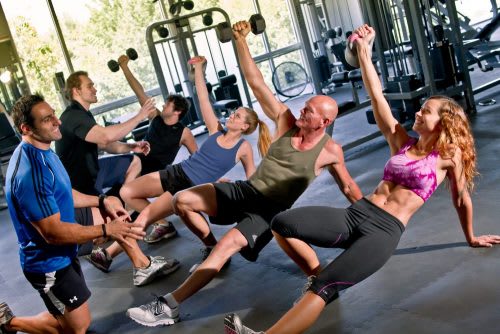
Exercise Less To Be More Fit
Exercise Less To Be More Fit
Sounds too good to be true, right? A recent study showed that the amount of exercise is what matters not the frequency. The study involved over 2,000 participants who were asked to wear accelerometers to track their physical activity. The findings indicated participants who exercised for a total of 150 minutes over a day or two versus participants who spread their 150 minutes out over a week’s time received the same health benefits of the workouts.
This is good food for thought. New “evidence” is constantly surfacing about the latest in health and nutrition. Its hard to know whats accurate. Six out of seven days of the week, you’ll find me up at 5:30 am getting ready for my workouts which last 45-60 minutes. How is it even possible to cram that much exercise into a day or two? And even if it was possible, it doesn’t seem realistic it would produce the same health benefits. Surely, I would collapse from exhaustion before I was even halfway through; that doesn’t sound very healthy. I may not ever find out the answer to that, but I have a couple guesses. When reading studies like these, you’ve got to take into consideration what isn’t being said as much as what is being said. For instance, the author defines “health benefits” as a decrease in risk factors such as diabetes, stroke, and heart disease. A health benefit to me is those things plus a leaner body with less fat and more muscle. However, the study doesn’t mention taking it to that level. In that case, a participant who didn’t exercise at all and then started exercising 150 a minutes a week within the time frame of a couple of days, of course, would receive those health benefits.
Common sense is our friend. I love staying up to date on current health and nutrition news, but I take it all with a grain of pink himalayan salt. I have to consider the source, the context, and most importantly, what works for me. Working out six days a week works for me. I’m a nicer person when I work out, I feel more prepared for chasing around two small children, and I like having that time at the beginning of the day all to myself while the rest of the world sleeps peacefully. All in all, I don’t think I’ll be testing out this theory anytime soon. What about you?
References:
Fadi Malouf – Nutritionist and Personal Trainer




